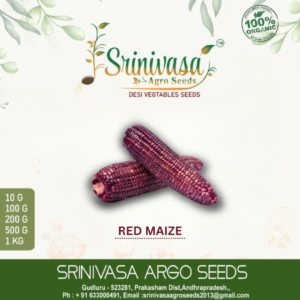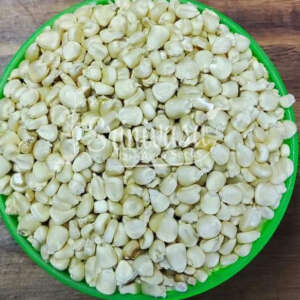Description
When and How to Plant
Sweet corn is a warm season annual crop that grows well at temperatures between 55 and 85 degrees F, however, it should be planted early in the season (see Table 2). Early planting helps deal with two problems: corn earworm pest pressure and harvesting in hot weather when heat causes sugar in the ears to convert more rapidly to starch and decreases the sweet flavor. Direct seed outside when soil temperatures are at least 50 degrees F, but ideally between 60-85 degrees F, usually about 2 weeks before the last frost. A soil temperature map can be helpful for guiding planting decisions. Super sweet varieties make a better stand if soil temperature is above 65 degrees F. Planting before soil temperatures have warmed enough may lead to slow germination and possible rotting of seed. Planting fungicide-treated seeds (usually colored a bright pink color) can be helpful. Sh2 seed, with thinner pericarps (the outer layer of the seed) are especially vulnerable to attack by seed-rotting fungi and treated seed should be planted, or a poor stand may result. While direct seeding is best, for the sake of earliness, corn may be started inside in six-packs 10-14 days before transplanting outside or direct seeded rows may be covered with clear plastic mulch to help warm the soil. Remove plastic after most of the seed has germinated.
Pollination is critical for successful corn production. In a garden, planting only a few rows of corn and relying on wind-pollination may result in poor yields or improper ear fill and gaps. Corn plants have separate male and female flowers on the same plant (termed monoecious) requiring pollen to be transferred from male to female flowers for proper ear development to occur. The male, pollen-producing parts or “tassels” are branched floral structures at the top of the stalk. The female producing part is the ear with kernels that you eat and the “silks” are the female flowers. For successful pollination, pollen grains from the tassel must land on the exposed silks; pollen from the tassels at the top of plants fall on the silks and the immature ears below and remain there. The next steps in the process, fertilization, are complicated and requires the proper environmental conditions, particularly moisture. Because it is a wind-pollinated crop, corn must be planted in blocks of at least 4 rows, side-by-side, to allow pollen to drift from the tassels to the silks on neighboring plants. Plant seed ¾ – 1 inch deep, either planting 2 seeds per hole or planting a single seed every few inches and thinning to a final spacing of 8-12” apart. If grown in containers, several containers may be planted and grouped closely together. Poor pollination and drought may result in poorly filled ears (missing kernels) or poor ear tip kernel filling.
Plant only one variety of corn, unless planning to plant blocks of different varieties far apart (500 ft). In corn, the pollen of the male parent plant will influence the characteristics of the seeds in the ear. Super sweet varieties may produce a tough, starchy kernel with reduced sugar content if pollinated by standard sweet corn varieties. Besides distancing, there are other ways to avoid cross pollination: plant 2 weeks apart so different varieties will not be pollinating silks at the same time or plant varieties that have different days to maturity, i.e., a block of a variety with a 70-day maturity next to a block of an 84-day maturity variety. Seeds may be sown again every 10 days for a continuous harvest of corn through the summer.
Table 2. SWEET CORN PLANTING GUIDE
| Category | Planting Outside Dates | Spacing (inches) | Days to Harvest* | ||
|---|---|---|---|---|---|
| Plants | Rows | ||||
| Sweet Corn | North LA: March 7 – April South LA: Feb 15 – April |
8-12” | 28-36” | 65-90 days | |
Where to Plant
Sweet corn is a warm season crop and should be sown in deep, well-drained, fertile soil with a soil pH of 5.8-6.8, that receives full sun (at least 6 to 8 hours/day). Corn plants grow 6 to 8 feet tall, so place them in a part of the garden where they will not shade neighboring plants. It is recommended to plant corn in traditional raised garden rows that are 8-10 inches tall to ensure good drainage. As with other crops, it is a good idea to add a layer of compost, peat moss, rotted hay, or other organic matter and mix it into the soil to optimize plant health.
Because it is a heavy feeder of nitrogen, corn should be rotated to a different growing location every year. Crop rotation, the avoidance of planting crops from the same family in the same row in the following seasons, also reduces the buildup of pests and diseases.
Plant Care
It is recommended to follow sustainable gardening principles.
Watering
Sweet corn needs regular watering, especially during pollination (silking) and ear-filling. One inch of water per week should be supplied, watering deeply so that water percolates 6 inches deep. Water early so that foliage can dry before nightfall.
Fertilization
Corn is a heavy feeder of nitrogen. It is important to provide both a preplant source and several side dressings as plants develop.
Organic fertilizers such as compost, fish emulsion, composted poultry litter or manure, worm castings, and blood or bone meal originate from living organisms. They are far more environmentally sustainable and safe than traditional synthetic fertilizers. They naturally release nutrients more slowly and over a longer period of time. When applying organic fertilizer, it is important to use in unison with compost, cover crops and crop rotation, which all work together to build soil health. Learn how to convert inorganic fertilizer recommendations to organic fertilizers here.
Alternatively, a synthetic fertilizer may be used at a rate of 1.5 pounds (3 cups) of a complete fertilizer like 8-8-8 per 20 feet of row. Broadcast, or sprinkle evenly, over the soil before planting and then mix in about 3-6 inches deep using a rake. Supplemental side dressing, or reapplication of synthetic fertilizer, is recommended when plants are 12 inches tall and again when they are 36 inches tall. Side dressing is the addition of a small amount of fertilizer to the soil around already established plants when the plant begins to fruit or vine, primarily to provide nitrogen. When using synthetic fertilizer, sprinkle lightly along the side of the row, keeping it about 6 inches away from plant stems; water into the soil. If soil test results indicate good supplies of phosphorous and potassium and a complete fertilizer is not needed, ½ pound of calcium nitrate per 20 feet of row is a good choice for side dressing. Because of their slow, steady release of nitrogen, crops fertilized with organic fertilizer often do not need to be side-dressed, but corn is an exception due to its heavy nitrogen use. Fish emulsion and blood meal are good nitrogen sources for side dressing organic corn.
Weeds
Corn may be cultivated (the sides of the rows disturbed to loosen and cut off weeds) to control weeds but caution should be used to avoid injuring the corn roots. One needs to hoe to a shallow depth and just under the surface. Weeds become less of a problem as plants gain height and begin to shade the soil’s surface. Hand-pull any weeds that break through.
Insect Pests and Diseases
Poor tip fill is a physiological problem caused by insect pressure, drought or extensive cloudy days while ears are pollinating. Sweet corn has several insect pests such as stinkbugs, chinch bugs, and aphids, as well as birds. By far the most damaging insect pest is the corn earworm. A moth lays its eggs on fresh corn silks and larvae travel down the silks to reach the tips of developing ears and do great damage. Heavy infestations may interfere with pollination and feeding sites can provide entry wounds for fungal pathogens. Several fungal diseases may affect corn, from damping off, caused by planting untreated seeds in cold soils, to leaf blight, downy mildew, rusts and smuts. Good preventive strategies are timely planting and harvesting, variety selection and good sanitation. See Table 3 to aid in diagnosis and management of some common corn pests and diseases.
Table 3. ORGANIC AND NATURAL MANAGEMENT OF COMMON CORN PESTS AND DISEASES
| Symptoms | Diagnosis | Organic and Natural Pest Management |
|---|---|---|
| • Curled and yellowed leaves • Stunted crops • Sticky honeydew on leaves |
Aphids |
|
| • Poor stand • Feeding damage to ears 3 days before harvest |
Birds |
|
| • Reddening of young plant stalks at base • Wilting; stunting • May worsen in hot, dry weather |
Chinch bugs |
|
| • Feeding damage, frass from tip to ½ way down ear | Corn earworms |
|
| • Hole at base of stalk • Bud leaves wilt and die |
Corn rootworm |
|
| • Seedling rots and suddenly dies (before or after germination) • Cool and wet weather conditions |
Damping off |
|
| • Damp, cool conditions • Small, yellowing, angular patches on leaves • Damping off |
Downy mildew |
|
| • Long, narrow lesions parallel to leaf margin | Northern Corn Leaf blight |
|
| • Orange pustules on leaves • Occurs in warm temperatures; wet leaves |
Rust |
|
| • Swollen, black & blue kernels • Galls on blades of young, developing leaves • Injured plants more susceptible |
Smut |
|
| • Feeding damage on new growth of young plants • Twisted or deformed stalks • Tillering; plant death • Feeding damage on kernels |
Stinkbugs |
|
Harvest and Storage
Corn usually matures 18 to 24 days after the first silks on the corn ears appear. Silks should be beginning to dry and turn brown, and ears should feel full and firm. Peel back the husk and puncture a kernel with a fingernail. Kernels should be plump and exude a milky white juice. Super sweet varieties will have clear, rather than milky juice. Because kernels have thinner skins in the sugar-enhanced varieties, ears should be handled carefully to prevent the bruising of kernels. Most ears of a variety will be ready for harvest at the same time.
Harvest early in the morning. It is recommended to cool ears of corn to 32 degrees F within one hour of harvest; place in an ice chest or move immediately to refrigeration to prevent sugars from converting to starch. Standard corn varieties are best eaten immediately but can be stored in the refrigerator at high humidity for 1-3 days. Enhanced varieties keep for 1-2 weeks.
Sweet corn may be canned or frozen to preserve it. Freezing old-fashioned, non-enhanced varieties right after harvest prevents starch conversion and preserves sugar content.
Corn is Nutritious and Good for You
High in Potassium
Essential for body function, especially the heart, kidney, nerves, bones, and muscles
Contains Iron
Important for red blood cells and muscles
Excellent source of dietary fiber
Important for bowel health, lowering cholesterol, controlling blood sugar, and maintaining a healthy weight









Reviews
There are no reviews yet.